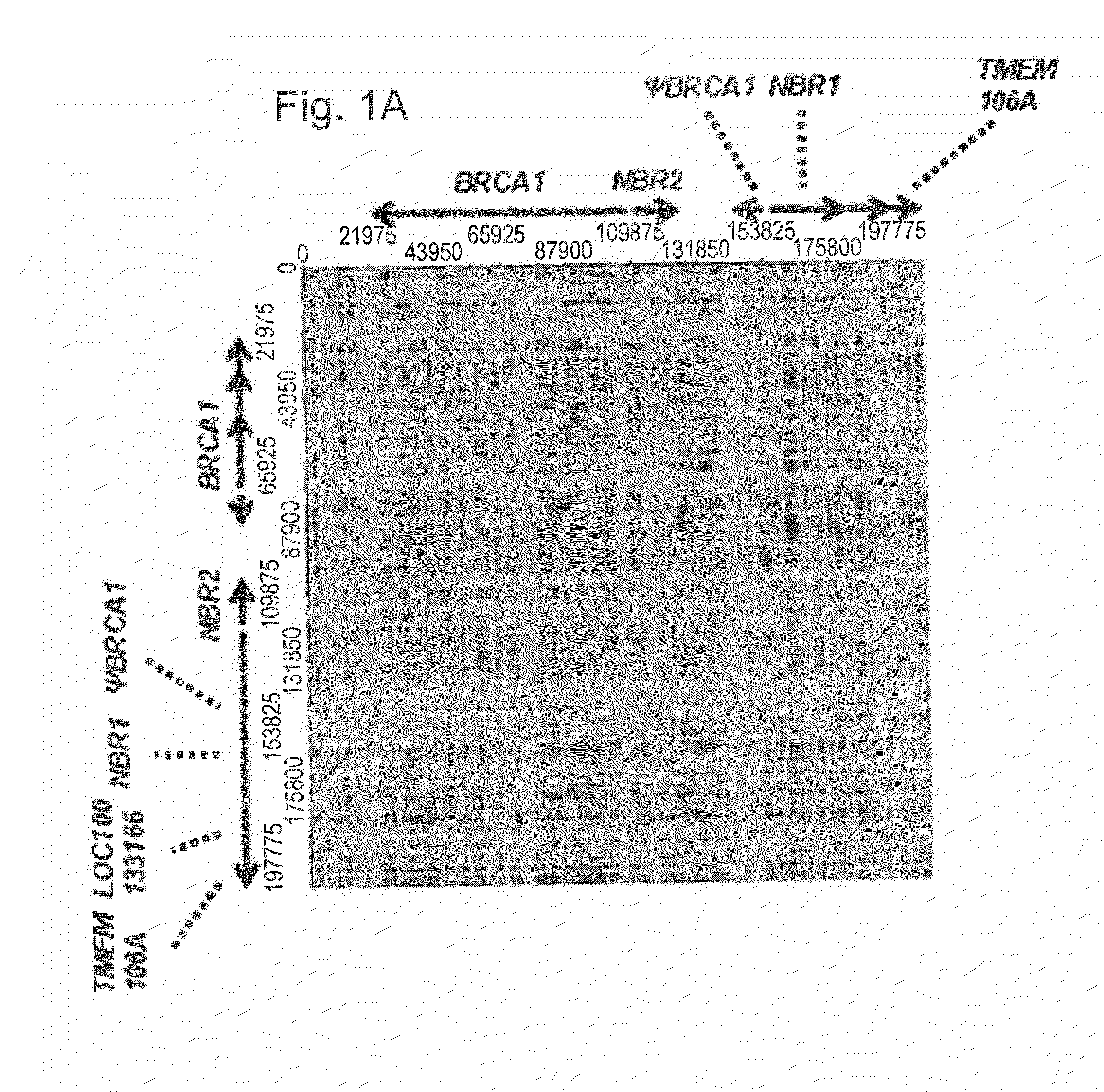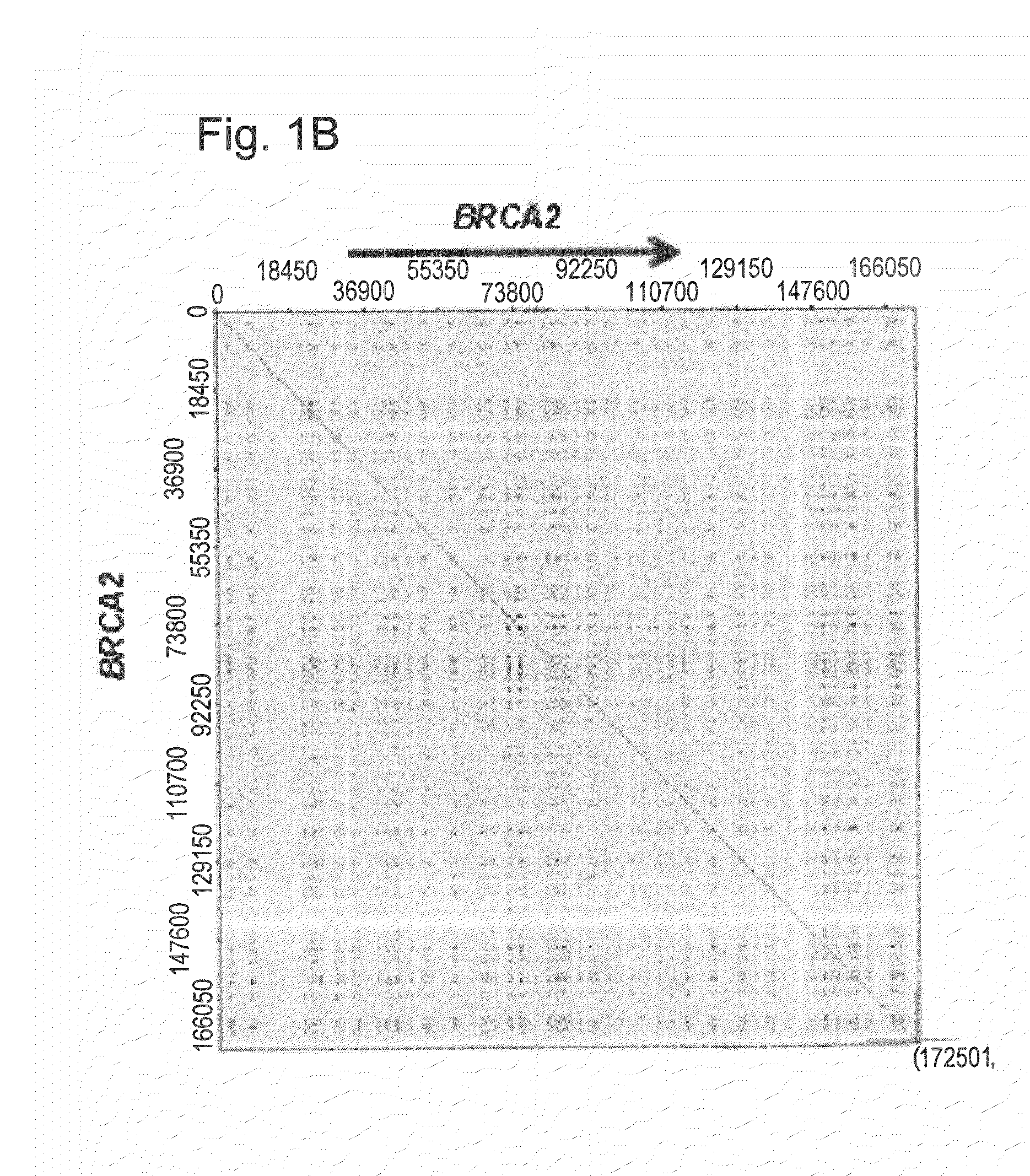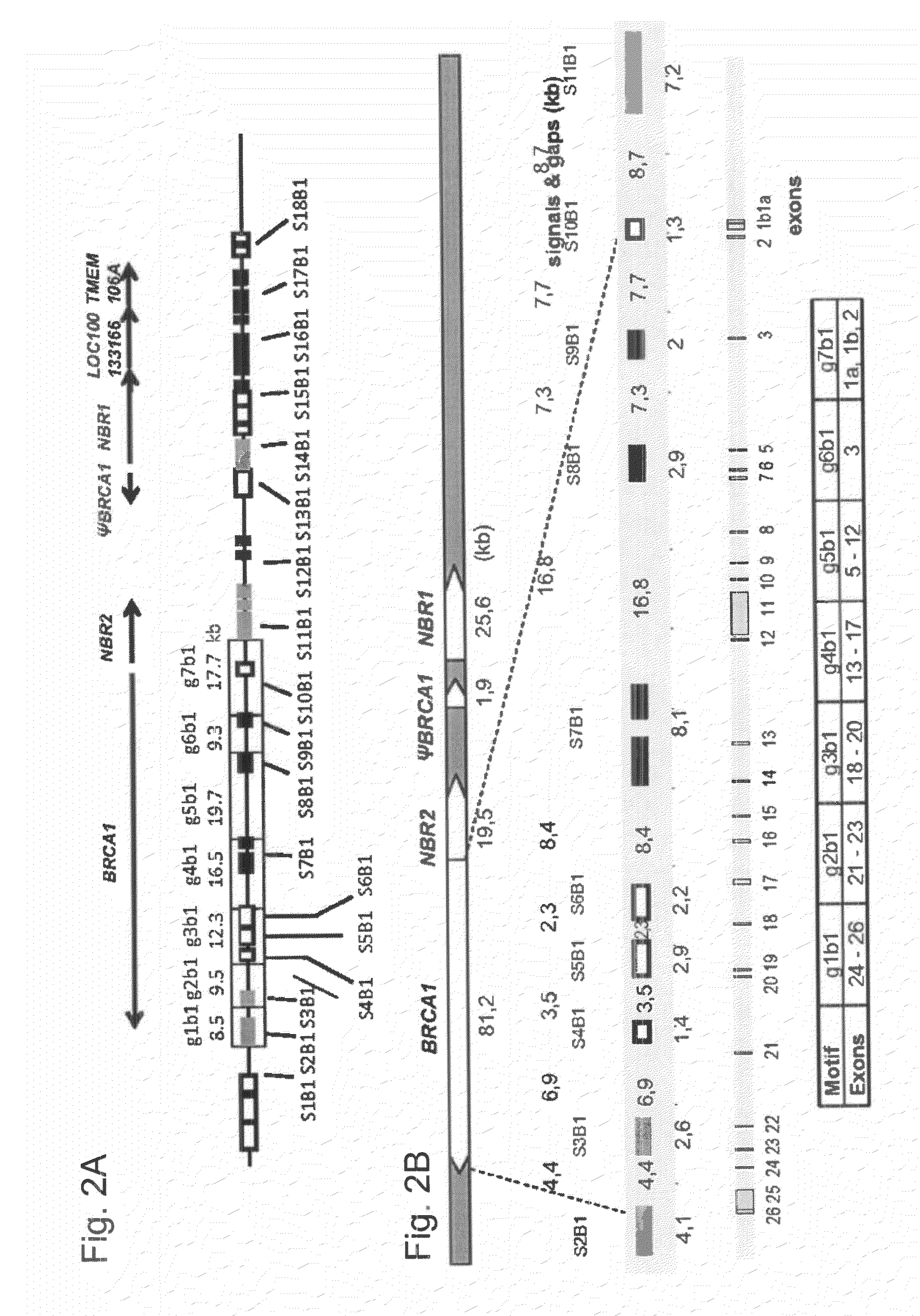Methods for the detection, visualization and high resolution physical mapping of genomic rearrangements in breast and ovarian cancer genes and loci brca1 and brca2 using genomic morse code in conjunction with molecular combing
a genomic morse code and genomic technology, applied in the field of high-resolution physical mapping and genomic rearrangement detection of brca1 and brca2 genes and loci, can solve the problem of large rearrangements missed by direct sequencing, and achieve the effect of reducing background noise and robustness of this technology
- Summary
- Abstract
- Description
- Claims
- Application Information
AI Technical Summary
Benefits of technology
Problems solved by technology
Method used
Image
Examples
example 1
Materials and Methods
[0081]Preliminary Patient Screening
[0082]The Genomic Morse Code was validated on 10 samples from patients with no deleterious mutations detected in BRCA1 or BRCA2 (control patients). The genetic test was validated on 6 samples from patients with positive family history of breast cancer and known to bear large rearrangements affecting either BRCA1 or BRCA2. Total human genomic DNA was obtained from EBV-immortalized lymphoblastoid cell lines. Preliminary screening for large rearrangements was performed with the QMPSF assay (Quantitative Multiplex PCR of Short Fluorescent Fragments) in the conditions described by Casilli et al and Tournier et al (Casilli et al., 2002) or by means of MLPA (Multiplex Ligation-Dependent Probe Amplification) using the SALSA MLPA kits P002 (MRC Holland, Amsterdam, The Netherlands) for BRCA1 and P045 (MRC-Holland) for BRCA2. All 16 patients gave their written consent for BRCA1 and BRCA2 analysis.
[0083]Molecular Combing
[0084]Sample Prepar...
example 2
Comparison of Genetic Morse Code and Molecular Combing of the Invention to Prior Color Bar Code Procedure
[0100]Part 1. Previous Application of Molecular Combing on Characterization of BRCA1 and BRCA2 Large Rearrangements: Design of Low Resolution Color Bar Codes (CBCs)
[0101]Molecular Combing has already been used by Gad et al. (Gad GenChrCan 2001, Gad JMG 2002) to detect large rearrangements in the BRCA1 and BRCA2 genes. The hybridization DNA probes originally used were part of a low resolution “color bar coding” screening approach composed of cosmids, PACs and long-range PCR products. Some probes were small and ranged from 6 to 10 kb, covering a small fraction the BRCA1 and BRCA2 loci. Other probes were very big (PAC 103014 measuring 120 kb for BRCA1 and BAC 486017 measuring 180 kb for BRCA2) and were covering the whole loci, including all the repetitive sequences. Thus, no bioinformatic analysis to identify potentially disturbing repetitive sequences has been even performed. More ...
PUM
| Property | Measurement | Unit |
|---|---|---|
| Fraction | aaaaa | aaaaa |
| Digital information | aaaaa | aaaaa |
| Digital information | aaaaa | aaaaa |
Abstract
Description
Claims
Application Information
 Login to View More
Login to View More - R&D
- Intellectual Property
- Life Sciences
- Materials
- Tech Scout
- Unparalleled Data Quality
- Higher Quality Content
- 60% Fewer Hallucinations
Browse by: Latest US Patents, China's latest patents, Technical Efficacy Thesaurus, Application Domain, Technology Topic, Popular Technical Reports.
© 2025 PatSnap. All rights reserved.Legal|Privacy policy|Modern Slavery Act Transparency Statement|Sitemap|About US| Contact US: help@patsnap.com



